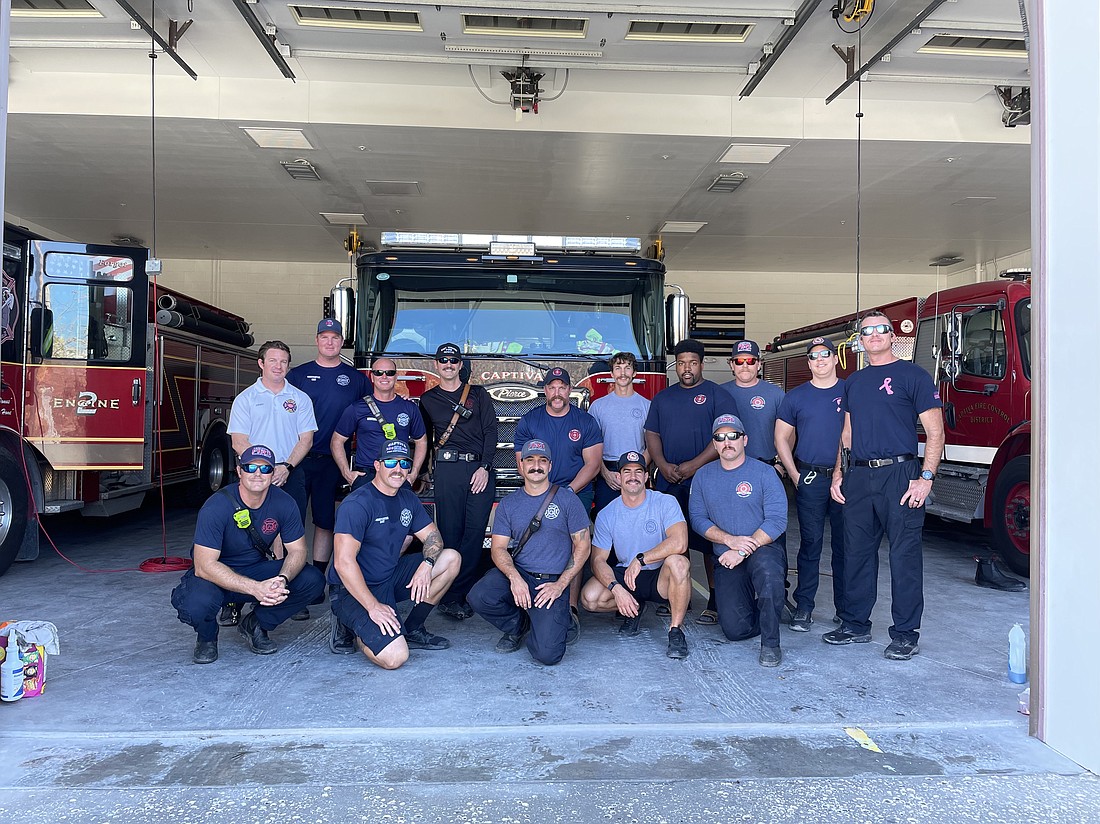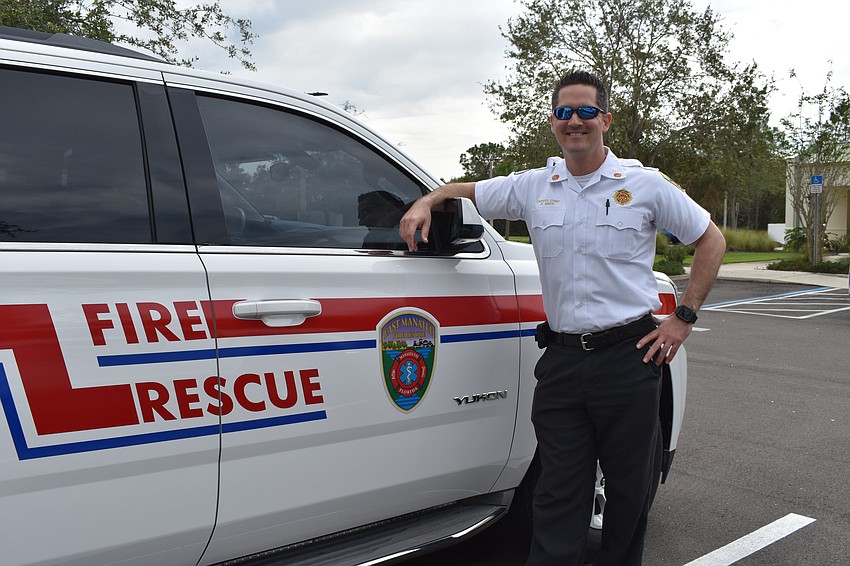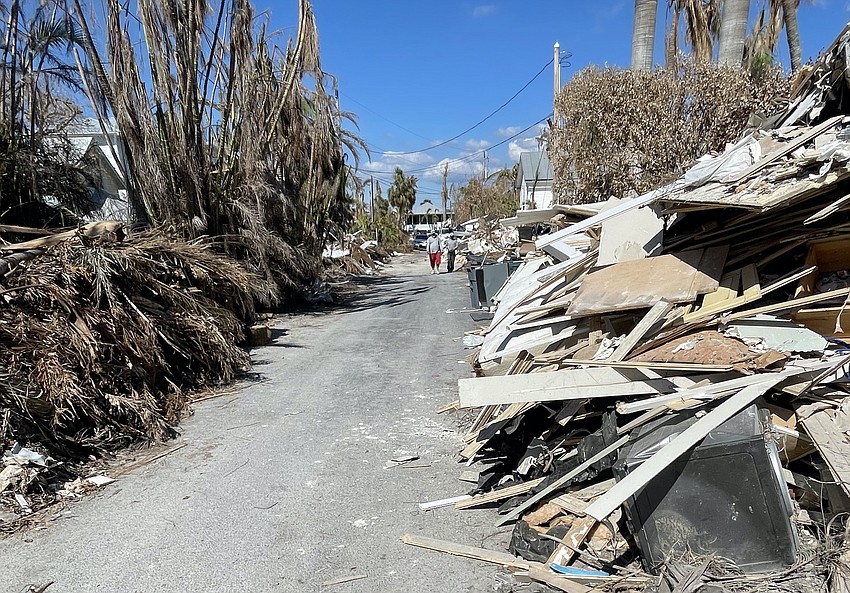- November 25, 2024
-
-
Loading

Loading

Although parts of Manatee County, such as Myakka City, were crushed, the majority of the county was spared Hurricane Ian’s worst impacts.
No one knows that better than East Manatee Fire Rescue firefighters, who continue to work in Lee County, which still is struggling to recover.
Deputy Chief Paul Wren, who has been serving in Lee County, described that area as “completely devastated.”
He first arrived at Sanibel Island on Oct. 15 and was overwhelmed by the destroyed homes, properties and businesses.
It hurt him to “see a place I visited quite a bit as a child utterly in disarray.”
Wren said initiatives just prior to Hurricane Ian that allowed Manatee County to hire more firefighters allowed East Manatee Fire Rescue to assist other counties without compromising its own operation.

Initially, he said, East Manatee Fire Rescue could not spare any staff when it received a state request for assistance in Lee County, for the local firefighters were occupied entirely with relief efforts in the Myakka City area.
However, when subsequent help was requested a few weeks later, the department decided to dispatch firefighters to Lee County.
Wren said the mission, which provided assistance to the Captiva and Sanibel areas from Oct. 15 to Nov. 1, and to Fort Myers Beach from Nov. 1 to Nov. 22, resulted from the State Emergency Respose Plan, and was influenced by Manatee County and Lee County both occupying Region 6 of the plan.
Wren said the goal of such a mission is to help overwhelmed fire departments with certain background tasks so that they can continue working where the community needs them most.
“Their community needs a beacon, a place of central intelligence, where they can go for information, first aid needs, or any kind of emergency help,” Wren said. “Fire stations are vital in that.”
Although resources from the Federal Emergency Management Agency do arrive in areas impacted by a disaster, Wren said FEMA typically will hand rescue activities over to state agencies within three to four days.

Wren served as an engine strike team leader to coordinate and control fire trucks in an area overburdened with managing units. He was deployed alongside fellow East Manatee firefighters Lt. Danny Chappell and Firefighter Dillon Garback.
“It definitely was eerie at night,” he said. “There was no power, no lights. Just quiet, and the sound of the waves on the shore.”
Wren was assigned to Captiva Station 181, where he initially worked alongside Chris Kidder, the battalion chief at the South Walton Fire District, before he was transferred to Sean Mast, the assistance chief at Okaloosa Island Fire Department.
The Sanibel Causeway had been impacted by the storm, with sections missing where bridge supports were connected to the manmade islands.
To reach the islands, the firefighters had to travel on a barge capable of transporting their vehicles.
Among the first tasks, Wren said, was restoring the existing fire stations to working order, clearing out debris and issues related to storm surge. He said work had already been significantly underway on the project.
Firefighters from East County filled in for duties including hydrant maintenance and care, with checks performed on about 1,000 hydrants, as well as ensuring that piles of debris did not block fire hydrants and that the debris pickup operations did not block pathways for emergency vehicles.
Wren said a portion of the work was centered on checks and mitigations for propane tanks, for almost every home had a propane tank on the property either above or below ground, and that a total of about 800 tanks to be checked.
Among the concerns impacting the area, Wren said, was the restoration of power. He said saltwater from storm surge posed major problems for electrical systems and in many cases created a fire danger.
One of the major incidents during the deployment was a golf cart fire that took place near the south end of Sanibel Island. He said the incident involved 36 carts, and he said the fire created a “pretty impressive” column of smoke that could be seen from Fort Myers Beach.
The golf cart materials, including the foam seating, and other synthetics burn easily, he said, while battery fires are difficult to extinguish, reigniting even when they appear to be out.
One advantage of East Manatee’s presence, he said, was that it allowed inspections to be conducted for residents’ businesses while the local fire department engaged with residents directly on various concerns.
“Just having your local firefighter come up and say, ‘How are you doing today?’ could mean the world to those people who just saw their house or their business (impacted),” he said.
After Wren’s return on Nov. 1, a tanker truck was deployed to Fort Myers Beach. This included Battalion Chief Charles Reid serving as a strike team leader, along with Lieutenant Stephen Beecher, and Firefighter Derek Parker.
With recent expansions, Wren said East Manatee Fire Rescue is better equipped to assist other areas in emergency situations.
Seven new staff members were hired in September, four of them replacements but three of them filling new positions. Wren said as a result, every rig now meets the department’s goal of being staffed with three employees, with four rigs being manned by four employees on a rotating basis.
By rotating firefighters, all the East Manatee Fire Rescue shifts could be covered on the short term basis while firefighters were sent elsewhere.
For example, other staff members picked up his various duties while he was gone, he said, with Deputy Chief William Hall taking up the majority of his role.
For the Nov. 1 deployment to Fort Myers Beach, Capt. Chris Galbraith took over the local responsibilities of Battalion Chief Charles Reid.
One of the duties of captains is covering for the battalion chief position, if necessary, although they also fulfill other duties including serving as a shift training officer, as well as administrative tasks.
Serving in Lee County does make Wren feel grateful things weren’t worse in Manatee County.
“There is no preparation that can protect you from a destructive force like that,” he said.
He said the evacuations of Sanibel and Captiva islands highlighted the importance of evacuations, and of the need for flood zones to be well defined so that residents are award of them.
“Buildings and businesses can be replaced,” he said. “Lives cannot.”